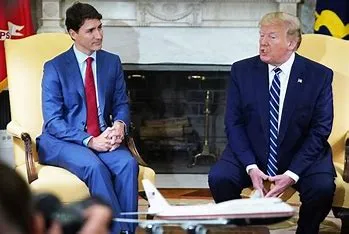“When written in Chinese, the word ‘crisis’ is composed of two characters. One represents danger, and the other represents opportunity.”
—John F. Kennedy
The world has come about a full year since the Covid-19 health emergency broke out in China. It quickly unfolded into a full-blown global economic crisis, posing an existential threat to businesses as they grappled with liquidity and survival challenges. The impact was particularly adverse on businesses in the hospitality, tourism, airlines and manufacturing sectors, weighing down on their cash-starved drooping shoulders. While governments all over the world have taken many fiscal and monetary measures to support the economy and cushion businesses from the brunt of the crisis, this is perhaps also the time for market participants to step up their role in stabilising businesses as the post-crisis period progresses. State actions, even though potent for short-term stabilisation, tend to saturate quickly. For long-term sustainable recovery, market participants need to find the cure themselves through self-initiated actions that are for their own benefit.
MARKETS’ ROLE IN RECOVERY
The World Economic Forum (WEF) in the article, “How banks can help companies restructure for growth”, published on 28th September, 2020, identified three phases of rescue efforts to salvage the economy in the post-crisis period: sovereign phase, debt phase and equity phase. The sovereign phase is the phase for state actions, which is the first response package for immediate rescue and pre-emptive measures to mitigate further loss.
As this phase tapers off, the debt phase kicks in, led by banks and financial institutions for the palliative care of the economy. Here banks and financial institutions need to infuse the required liquidity and capital through dedicated credit lines to revive businesses. In this phase, it is essential for the banking sector to invest in opportunities or back restructuring efforts that not only benefit businesses in the short term to tide over the crisis, but also focus on the bigger picture of long-term growth and resilience of businesses. At the same time, the banking sector will have to carefully calibrate risks and distinguish between good lemons and bad lemons viz. firms that have the potential to be restructured or those which will not survive the crisis at all.
Once the banking sector reaches its saturation point, the capital markets need to step in to offer funds directly in the equity phase. With declining valuations and lower interest rates, the opportunity is ripe for private investors to invest in viable yet distressed businesses. Further, this is the time to find creative and versatile equity solutions for businesses. As per the WEF, there is already some activity picking up in offering full balance sheet solutions for some distressed industries with innovative sale and leaseback. Financial engineering solutions are also being offered, allowing struggling businesses to access their full capital base to generate the needed cash flows.
The equity phase has the potential to be the knight in shining armour for small and medium enterprises (SMEs). Private investors and private equity firms can hold direct equity control in those companies that pump liquidity in SMEs viz. trade credit. Investments in SME-focused exchange traded funds (ETFs) are another lucrative avenue. If risk aversion is more, investors could infuse low-risk liquidity to SMEs by purchasing minority stake in them. This would assuage valuation sensitivity and risk of ownership control.
THE ROLE OF BUSINESSES
A business is an intricate filigree work made of numerous threads that impart strength and continuity to it. Businesses are in the best position themselves to mitigate potential negative fallouts of a looming crisis if the right actions are taken at the right time and in the right earnest. As the post-Covid crisis progresses, managing their own stakeholders and planning for the future will be important ingredients for stabilisation and restructuring. Cash flow improvement measures such as short-term cash saving actions, cash-flow monitoring plan for business plan, contingency planning, income protection measures such as product repositioning and/or pricing, balance sheet structure improvements such as asset review and divestment identification, balance sheet right sizing, corporate simplification like review of corporate structures, and strategic planning such as planning of non-strategic assets divestments, execution of settlement, sale or merger plans, etc., will be immediate corporate restructuring measures that businesses can take to recover from the crisis. Such a recovery will not only aid in overcoming short-term setbacks but also help sustain the value and life of the business in the long term.
When in an economic crisis, a firm’s first instinct may be to just survive the crisis somehow. However, in the long term, the strategy of a firm should go beyond solely saving the day. A corporate restructuring is said to be sustainable when a firm is able to reverse the performance crisis that was brought about on account of a turbulent business environment or economic recession or insolvency, is able to terminate the threat to its survival and, finally, is able to accomplish sustained profitability for future growth.
Sustained competitive advantage and strategic flexibility can prove to be the panacea for long-term stability. A study by Penrose on “The theory of growth of a firm”, developed further by Rumelt, Wernerfelt, and Barney, shows that a firm is said to have sustainable competitive advantage if its resources are valuable, rare, inimitable, and non-substitutable. Some studies advise organisations to use a mix of actions to build flexibility and competitive advantage, such as, (a) developing dynamic core competences, (b) focusing and developing human capital (e.g. contingency workers and outsourcing), (c) effectively using new technologies (e.g., IT or flexible manufacturing systems), (d) engaging in valuable strategies (e.g., cooperation), and (e) developing new organization structures and culture (e.g., horizontal structures).
FLEXIBILITY IS KEY
While markets advocate for flexibility and adaptability for survival, the same fluidity is expected from the state as well. Flexibility in types of interventions is essential, especially in times of crisis. Studies have shown that countries which have shown flexibility in supporting one-off interventions—for example, restructuring funds or special-purpose vehicles—have done better in overcoming a financial crisis. Similarly, such countries have relied on formal bankruptcy and insolvency systems, but not exclusively, in order to prevent overburdening the system in a crisis. They have buttressed the formal system with pre-packaged insolvencies (prepacks). Countries have facilitated setting up of asset management companies (AMCs) to resolve distressed assets and promote a market for them. They have relied on market determined solutions to unload the assets of AMCs. Further, they have established frameworks for voluntary workouts, which are relatively quicker and cheaper, to bring firms and stakeholders together to determine the ability of the firm to pay up its debts and survive a crisis.
The recently enacted Corporate Insolvency and Governance Act, 2020 by the UK government and the German Act on the Stabilisation and Restructuring Framework (StaRUG) for companies are cases in point. Similar innovative measures can also help Indian businesses to successfully restructure themselves outside the formal insolvency frameworks to recover quickly from the Covid-19 pandemic induced economic crisis.
The writer is Assistant Manager in the Insolvency and Bankruptcy Board of India. Views expressed are personal.





















